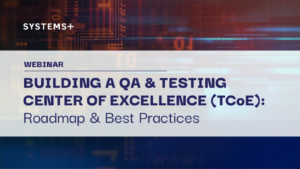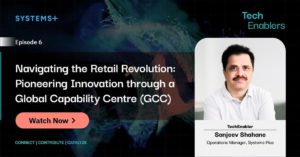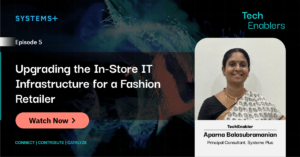Why GCCs represent the future of top technology jobs in India
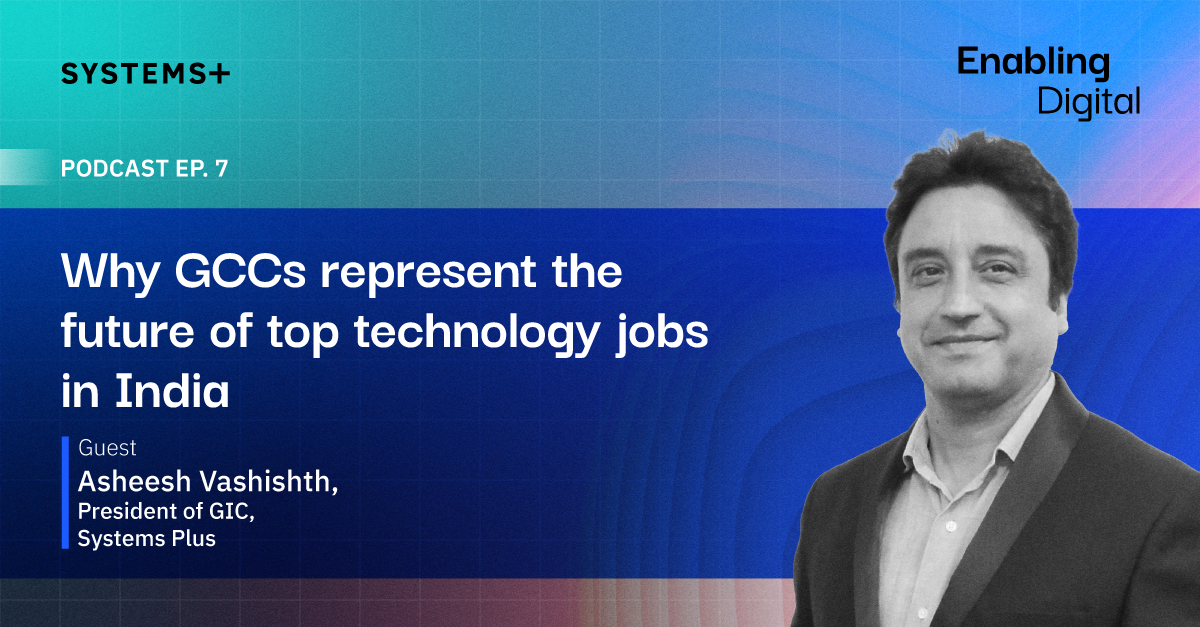

With
President of GIC,
Systems Plus
The Enabling Digital with Systems Plus podcast series explores how CIOs can capture opportunities by looking at and beyond technology and data to propel their organizations into the digital forefront.
The podcast series looks at how independent thought leaders and visionaries from the tech industry across the globe bring their ideas to scale within the business world, sharing innovative, path-breaking insights with our listeners.
We interview experts on trends and best practices for IT leaders. We talk monthly with tech thought leaders on 21st-century business topics like innovation, digital transformation, AI, automation & Tech talent.
Amay Jhaveri 0.00
Hey, everyone, welcome to Enabling Digital with systems plus Podcast. Today I'll be speaking to Asheesh, who is the president of the Global-in-House Center at systems plus and has been instrumental in the conception and execution of the Managed-GIC model. Asheesh has over three decades of experience and we're incredibly lucky to have him here today. Asheesh to begin with, can you just tell us a little more about your, expansive career? And then, what is the Managed-GIC or Global-in-house center model?
Asheesh Vashisht 0.46:
Thank you, first of all, thank you very much. It's good to be talking to you. And yeah, so, my career involves expansive, as you said, three decades of experience, and this experience has been very enriching, right from the coding days, where I learnt Fortran, COBOL to today's technology area, where we are talking about clouds and data and analytics and everything, I have held different positions, worked at, you know, development and then worked with ERPs and implementations, moved over to projects and then for last around 11 years, I have been doing what we call as managed Global In-house center. So, in Systems Plus, my role has been very, I mean, I've done multiple roles at multiple times, but the role which I really enjoy, have been enjoying and really enjoy and would probably continue to enjoy is this role of heading the Managed Global, In-house centers. So, basically, this is nothing, but it is an extension of our customer’s team in India while giving them transparency, control, and cost optimization so that they get the best benefit out of the cost in this model. So, traditionally, Global-In-house centers are more focused on more on a, I would say something where the projects have been dropped off the shelf and given to the teams they handle, but this is purely and truly a partnership model. We have heard a long time ago, So far, we have always been hearing a supplier-vendor or customer-vendor relationship, this model really talks about a true relationship where your customers are, directly managing the teams, which we are hiring for them. And these teams are basically their backend operations, like HR, finance, everything is being handled, handled by us.
Amay Jhaveri 2.56
Got it. So if I understand correctly, it's not your typical outsourcing model, where, you know, a customer will come and say, Hey, we have this project, can you please take care of it? And as you know, a beginning start date and an end date? It's a lot more dynamic and involved, correct?
Asheesh Vashisht 3.13
Yes, absolutely. You're bang on, it involves basically, as I said, it's a true partnership, it involves, we and the customer both talking together, understanding their needs, understanding their pain points, making sure that, we help them in whatever way, and, giving them the best of the best of both the cultures from US and India point and as well as the time, you know, time difference advantage.
Amay Jhaveri 3.44
Awesome. All right. And you've been, you've seen sort of the IT landscape develop over both 30 plus years now, in India. And, from my understanding, I think, GICs, or GCC is this concept that has always been around I think it's coming to the forum or, or the past, 12 years since we've been around and probably longer than that, what have you seen in terms of a shift in, in, in the type of work and the talent that GICs and GCC have been attracting? You know, typically, we used to think of India as a very, you know, okay, let's, let's do a bunch of back-end operations and support, but I feel like that's changing.
Asheesh Vashisht 4.25
Yeah, You're absolutely right. Initially, when, when we were talking about GIC or we were looking at any offshore model, we generally used to look kind of a typical backend kind of operation where we were looking at some kind of tasks that are repeated in nature and which have a checklist kind of things, given over to the team here. And they do the task and then give it back. And there was more control. There was I mean, the team over there in the US used to have the control they need to see how the work is being done. But as we are evolving, we are seeing, you know, that more and more customers are now looking at, you know, people or vendors or, you know, partners, impacting their business, looking at the core competencies, looking at doing complex work, looking at doing, you know, innovation being part, and the teams need to be empowered, they need to be, you know, individual, you can say, a contributor, not just doer, they need to be someone who will get back to them saying that, hey, listen, this is the way we can do it. And I think this is what is the best way, and what you're thinking is probably not the best way. So it is definitely evolved. Right from, you know, I still remember when we started, we were doing more kind of a development job where, you know, the specifications were given to us in one of the startup calls, and the overnight we used to develop and next day, the customer used to come and look into it. And they definitely depended, the whole work was basically buying, I could innovate we can say that was quality assured or quality tested by them. But the shift is now that once they give the work, they expect us to do everything, the quality, meeting the requirements, the specification, and also tell them if there is a better way of doing things. So definitely it has involved from backend operations to more from a cost center to a kind of innovation partner. This is more like an extension of their enterprise. So a company in the US can have a team sitting here, which is their enterprise. So this is more. So yeah, it has evolved a lot from you know, just doing a backend work to being an innovation partner to being somebody who can help in the strategic thinking, and who can, you know, help them in giving ideas which are business impacting.
Amay Jhaveri 7.05
Got it. And so, I mean, you said the word innovation a couple of times, and I completely agree we're seeing a lot of innovation happening out of India now. And it's fantastic. I feel like the term GCC is not really representative anymore, even GIC necessarily right? Well, I think a lot of what we're calling GTC, which is global technology centers, is what people are sort of repositioning these teams as because they truly are driving innovation, like you said, Do you have any examples? As each of, what some of these, you know, captive centers are doing? Right, like what kind of business-critical applications are they working on and, and helping drive sort of innovation?
Asheesh Vashisht 7.45
So I would say that there are many examples from the time we have, you know, been working with them. Over the years, I mean, nobody would have thought, you know, doing a complex SAP implementation with a team sitting here in India. And that's what we did with one of our customers. We had a team sitting here. Yeah, of course, few people are traveling, but there was a big implementation, which was done by the team sitting here, there were a bunch of people who were doing backend work, and there were some people who went to us and managed the whole implementation. So it's something nobody would have thought about a couple of years back, people always thought that implementation means being on the site, talking to the business users talking to you know, being at the, at the physical location, so that you can fix things, you can talk to the business user, interview them and find out, but all those things have evolved, and all those things have changed a lot. And today, and the last two years, a couple of years, we know because of the COVID Everybody has now moved online, so it was definitely never thought that we could do things that require physical presence there.
Amay Jhaveri 9.00
Awesome. And So I mean, very clearly, right, we're seeing that complex innovation and complex, implementations like you said can happen in this in this model, and out of India. What I'm curious to talk about more as again, okay, let's, let's say this, this model makes sense. And you want to go ahead. There's of course a lot of complexity yet when it comes to setting this up in India and working with a team offshore etc, you know, just not the timezone. But other differences. So one of the things you mentioned, Asheesh, was the extension of the enterprise. And I want to just sort of tag on that for a second because, you know, you've got this big company in the US, you maybe say, a multibillion-dollar company, potentially, right? That has its way of working, it's got its own culture, and now all of a sudden they want to open a GIC in India. And India has a very different culture. from the US, but at the same time you want to sort of merge and marry that Indian sort of local culture with the US culture in the organization. How do we how do you do that? Right doesn't sound? It sounds a lot more simple than I imagined actually is.
Asheesh Vashisht 10.19
Yeah, that's a good question. So, I, so, definitely, you know, there is a cultural difference with how Indians are and how we work with offshore companies and different people from different geographies. But our experience for the last 12-13 years, which we have been working on MGIC, we have gained a lot we have tweaked our model, we have you know set processes, which helps us you know, take care of these, I would not say complex things, but these challenges which come in, from the cultural perspective, from the employee perspective, as well as from the technology perspective, we have set harmonization processes, when we, we normally talk about harmonization process after the customer has been, you know, had signed up an agreement or signed up to work with us, but in a way we are actually harmonizing with them, right from the time we get talking to the customer, on the day one, once we start talking, we understand what their needs are, and, you know, we try to understand what kind of, you know, budget or what kind of timelines they're looking at. And it's more of it as an agile conversation that you know, simply saying that we need the How can you do it and what time it will take. So, once that is done, and once we agree that we want to be partnered together and work together, there are different things like there are, IT harmonization where we talk about you know, what kind of hardware infrastructure you have as corporate and what do we have here in India? How do we connect, what are the security issues, what are you know, how do we take care of those security challenges, what are the compliances in India, which we need to you know, definitely take care as well as outside customer needs to take care. So, this all harmonization process on the IT front, on the employee front, which is like all human resource, there are different policies, there are policies, which our customers you know, definitely want to abide by. And then there are policies, where, which has to be abiding by our employees, which are in India. So we take care and we do this whole process, which probably runs around two to three weeks, where we do this harmonization. So, we are not very rigid on our policies unless it is compliance and statutory or security related. Hence, this whole harmonization process brings in, you know, a mix of both to the table.
Amay Jhaveri 12.51
Got it, And what about you know, just bringing in that local culture, you know, India has its own festivals, its own holidays, its own celebrations. And making that sort of merge with what you know, what's happening in the US like how do you see sort of us our international clients working with that and embracing that?
Asheesh Vashisht 13.15
So generally, I mean, they embrace and now since this lot of this outsourcing offshoring, outsourcing happening, I think most of our clients probably know this, you know, local, or statutory or I can say, holidays which are there in India, probably I would be surprised if somebody comes in say, I don't know, this kind of, you know, the festival is there in India, they probably know about it. And that's what we do during our whole harmonization process, we talk about you know, what are the days when we definitely would not be able to work and there are similar days in the US also. So, this whole harmonization process is basically looking at, you know, when they won't work and when we are not working is there something which we can leverage on? So, for example, if the US is not working on a particular day, okay, then we can the team can work here and you know, deliver things. So, we do all this kind of you know, harmonization, and again, these are not done at the end of the year or in mid of the year, once we are starting the project, we have this clear-cut defined saying that this is how the teams are going to work on these particular days, they may not be working, these are the kinds of holidays they will take on these US holidays, they should be available. So it becomes very easy from a planning perspective. Because you definitely know today in the future, when do you want your team to be available?
Amay Jhaveri 14.42
Got it. And so that was you know, the US embracing the Indian culture. Let's talk about the flip side of that where the team in India, how are they embracing the corporate culture in the US, you know, and making themselves feel like they're part of the team, right? I've seen you know, I've seen photos Upon walls, I've seen customized kits and those kinds of things, what are some of the things that you can do to help the India team embrace the culture?
Asheesh Vashisht 15.08
Yeah, so, we, as I said that over the years, we have evolved a lot. So I mean, if you walk into our office, you can definitely see our customer specific, you know, a section where you see everything related to that customer. And we also do a lot of you know, morale, building team building activities here in India. And in terms of, you know, from an employee perspective, it gives him definitely an edge, because he is working with the best of the IT companies here in India, as well as a best of a brand in us. So, the employees get a mix of experience from the business side, as well as the latest technology and working with the technology company. We also do a lot of how to explain them. But if you talk to our employees, and ask them, whom are you working for? The first answer, which will come out of their mouth would be probably the customer’s name, not our company. So that's how we build the culture.
Amay Jhaveri 16.10
Awesome. And you know, Asheesh, I think culture is super, super important in helping retain employees today, but I want to talk about, you know, the employees now and really understanding a little more about them, because they really are a core part of the GIC business. And so, when it comes to employees, you know, I think we have almost, you know, 300 to 400 plus people in this model right now, what do you feel are some of the key factors, in retaining these employees, keeping them happy, and ensuring that, you know, they have a good career path with some of them, with some of the clients that we work with?
Asheesh Vashisht 16.49
That’s a good question. I mean, that's probably one of the things which most of the organizations are looking at, you know, the employee is probably one of the biggest assets for any IT organization or for that matter for any business, you know, today the employees is something which is very, very important for an organization and hence a lot of focus is put on the employee. So, from an employee perspective, if I put they basically look at a cup full of things, which you know, really motivates them, a technical person is definitely looking at a technical latest technology work with the latest technology, work on different projects, and kind of things. And second, they definitely look at work-life balance, they look at flexibility, and they look at the direct connection with the customer, which is a big thing for somebody who's working here in India, have traditionally you would have known that you know, a developer would never have an access to a developer person sitting in the US, this model gives them direct access to them. And this is definitely an advantage because they do not have probably layers of the communication channel, which basically, you know if you have multiple layers of the communication channel, you drop off some things, there are things with drops offs, you are directly talking to the business users, and these business users are basically stakeholders, they are key people who are decision-makers. So, when it comes from them out to these people, they understand what is required. And then they you know, as I talk about innovation and technology, they give the ideas to them. So, that's one thing, technology definitely you are working with one of the best in their class customers. So, they are definitely working on the latest technologies, there is a complex, you know, challenging work, which employees would love to do it, as far as I think they have, these are more empowered teams, there is no project manager or somebody sitting on their head and looking at their code every time. So they are just given work and they are asked to do the there is a lot of trust between customer and us and employees. And we give them work and we definitely know that they're going to deliver as per that. So they're empowered. They have the latest technologies to work on. There is challenging and complex work to work on. They definitely have a work-life balance there is no you know, that's one thing which we did our employees really, really value. So these are some of the things which definitely, and, you know, just to give you a number in terms of the number if it excites you in GIC we have, as you said that we have around 400 people working with us, but in that 400 people we probably have 150 technologies we are working on more than 150
Amay Jhaveri 19.51
Wow, so 150 technologies are no joke and I'm sure you know, I'm sure this action with the customers is a big draw for, for some of these employees from, you know, the traditional IT companies, the larger ones that we, you know, we see in the area I imagine we're able to get a lot of talent from, from those type of companies just because of this direct interaction and, you know, that they have with the client.
Asheesh Vashisht 20.24
Absolutely. Absolutely. Your bang-on.
Amay Jhaveri 20.28
And I, you know, the other thing that I've I've also started noticing is even within this cap, this, you know, GIC model, it's not just okay, you have sort of junior to mid-level developers and individual contributors and senior developers, we're also seeing a, you know, if I'm not wrong, like director level people and those type of extremely senior positions in this model today, operating all over India and getting involved in your important business decisions, is that correct?
Asheesh Vashisht 20.58
Yes, absolutely. Initially, as we were talking about earlier, we said that you know, traditionally, there was more of a back end kind of work, which was giving, and we moved on to you know, more of a technology and strategy kind of work. Now, most of our customers have these director level people, or a senior very senior level person sitting here, just for take for an example, initially, we used to have, we used to have this architecture sitting in US or somewhere else, they used to design everything and send it to India, they used to develop and give it back, but the whole thing has now changed, we are having architects sitting here, who are actually designing the solution, who are understanding the business and coming up with the solutions. And that's why we have you know, different at different levels, right, from Project Manager to, you know, a director level person for analytics or for direct marketing, or you can say, I know, a person who is into our delivery manager or managing different portfolios for a customer.
Amay Jhaveri 21.58
Wow. So it's amazing to hear, you know, those kinds of roles now happening in India. So, Asheesh the real question is, where do we find them? Right? How, how does one go about finding some of these amazing people that you've just described in an Indian market today? What are some things to look out for, you know, pitfalls, but at the same time, right, how do we attract this kind of talent?
Asheesh Vashisht 22.29
So, again, these kinds of people, okay, technical people, or any people who work in an organization, they definitely look at our technology, you know, or challenging work to be there, you know, they need to be, every human wants to be challenged, and they feel very happy when they find out and come out with the results and you know, deliver something. So, finding talent has probably never been a big challenge for us, we have done this over the years, we have our own ecosystem, okay, where we have you know, people working with us, even in our organization, we have seen that people who have joined us, because of our culture, because of the work-life balance. Because of the, you know, the transparency and the Direct Connect, we give it to them with the customer, as I told you, people hardly, you know, they don't leave us very fast once they join this model. Probably they, you know, they continue to be, there are people who have been in our organization working in the model for 40 plus years. So there are some customers who started, who started with us when we actually started this GIC model, and they are still with us. So, I mean, with all these things with technology, with our ecosystems, we have a big team of talent acquisition, which are best in industries. So it's not very difficult for us to you know, find the right fit for our organization.
Amay Jhaveri 24.05
Got it. And do you think it's better? Maybe not a better strategy? But do you think something that's effective is a lot of sort of hiring people maybe when they're sort of slightly junior to mid-level developers and then training them up to eventually become those architects or do you feel like you can also find some of these architects and director level folks out there in the market?
Asheesh Vashisht 24.25
So both are possible as we said that, you know, the whole strategy or the whole vision here is that we want to do partnership with the customer. So depending on the complexity, depending on the need of the business, depending on the, probably budget, we sometimes offer, to look at senior-level people directly with experience coming into the team. Sometimes we do also suggest to our customer saying that we can look at a mid or senior-level person who probably has very well competency and know-how, but can reach that level. So we, again, as I said, this is more of a, you know, a partnership model. So it's not that what comes from the customer, we just give it to them, we just tell them to listen, this is how the Indian market is. And because of your business needs, because of the urgency because of the, you know, the six year term, size and the complexity of the project, this is what you should do, either you should, you know, we suggest them that instead of hiring a director level person, you hire a probably a delivery manager level person who probably has the talent and can go up to that level, this gives him a chance to grow. And it gives him a chance to, you know, probably prove himself to go to the next level. And also it gives the customer an edge because this guy comes with a hands-on experience at a lower level, and has the knowledge and vision to deliver things.
Amay Jhaveri 26.02
Understood. So yeah, I mean, it's amazing that we can, we've just now got that much experience, recruiting and hiring so many people that we can identify, you know, those sorts of things where somebody may not be at a director level position, but has the potential to become one. And I think that's pretty, that's pretty amazing. So, you know, one of the other things I just wanted to quickly touch upon Asheesh, is we've spoken very technical, technical-type roles, but I imagine the model is not limited to just those types of roles, right? We can get other roles. And other say slightly more business-facing non-technical positions through this model, what are some of the examples that you've seen?
Asheesh Vashisht 26.42
Yeah. So yes, as the business has been evolving, as the market has been evolving, we talked about, you know, doing back-end operations to, you know, technical work like development, and, you know, doing, we moved on to implementations of ERPs. And then, you know, SOC NOC setting up SOC NOC teams and security team, as we are evolving, we are also seeing there is a lot of other work which can be outsourced, we are working with some of our customers on, you know, KPOs, we are working with some of the customers on data and analytics, there's a lot on data analytics, which can be done by the teams here in India. So if you'll see there is a huge talent pool available in India, on the data side, and this, from the university level, there has been a lot of focus on, you know, university giving courses and, you know, educating them on data analytics part of it. So that talent is huge. And hence, it is slowly moving towards data analytics, you know, and then moving to the cloud, those are the things which slowly this model is moving into.
Amay Jhaveri 27.53
And so when we say data and analytics, and data analytics is a very broad topic, but, you know, there's, I'm sure there are technical, you know, very technical data engineers that we've hired. But, you know, from a business perspective, I feel like you're also saying, even data analysts to support, say, marketing teams, right, for report generation, visualizations, those kinds of things where we were seeing a lot of those types of data analysts as well.
Asheesh Vashisht 28.17
Yes, absolutely. We have. We have a marketing team working with us, where we have data people sitting here in India, churning out and doing analytics analysis from the data and giving it to the marketing team. We are doing that.
Amay Jhaveri 28.32
Amazing. All right. I have one last question. Before we sort of wrap up. And, you know, it really comes down to if someone is considering, you know, to use this GIC model and, and open up their own center in India. What are some of the sort of pros, of course, which we've briefly spoken about, but then also some of the things to be aware of, before getting into this?
Asheesh Vashisht 28.58
Yeah, some of the things which we definitely should look at, you know, we need to have a very, very employee-focused culture. I mean, this is very, very important. And we have really seen this over the years, and we have been, our huge focus has been on employee-focused culture. It would be great if your company has some certification. For example, our organization is a great place to work certified. And we have had this certification for the last two years, we started competing the last two years, and we have been evolving and doing better and better every year. There has to be a lot of focus on learning and development. We need to definitely spend a lot of time on training and activities. Again, work-life balance, and the whole culture, are the things that we should focus on. Of course, we do also focus a lot on CSR activities. That's also important.
Amay Jhaveri 29.56
Right, so great culture. Learning and Development and good CSR call it. All right, everyone, you've heard Asheesh, he has set up 20 more than 20 of these captives. And it's been great having him on the podcast today. Thank you, everyone.
Asheesh Vashisht 30.00
Thank you, Amay, thanks a lot

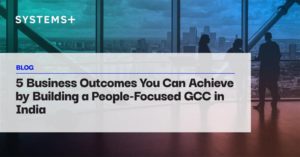
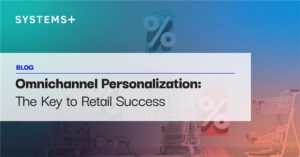
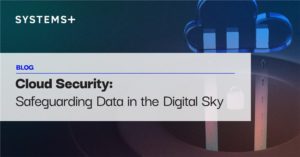
Amazon Web Services
Know MoreAmazon Web Services
Know MoreAmazon Web Services
Know More